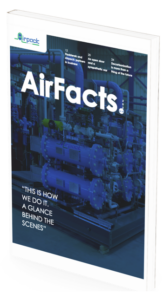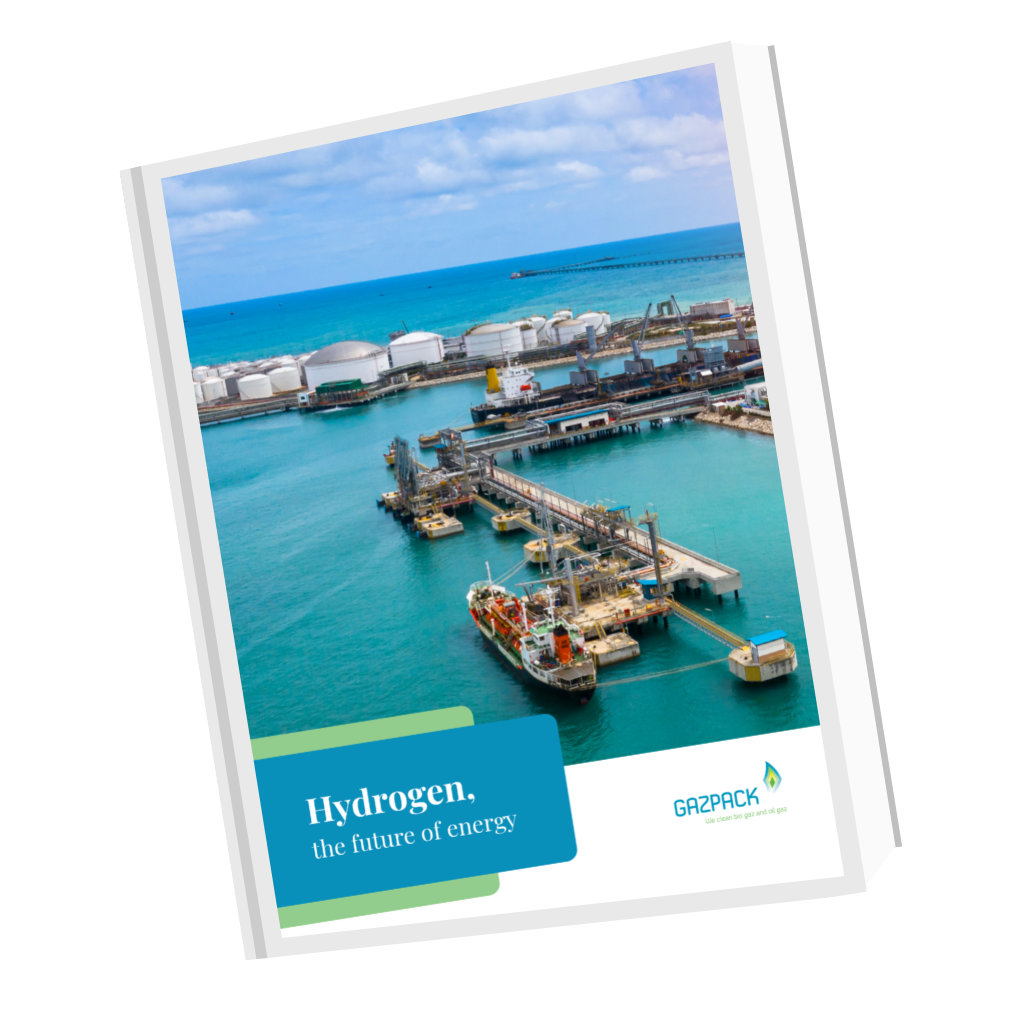Desulfurization
Looking to explore the world of biogas processing and handling solutions? Get instant access to our documents about biogas technology.
Sulfur as an element is ubiquitous. In the universe, it ranks 10th inprevalence; on the earth, it comes in fifth. It is found in vitamins, amino acids, the earth’s crust, and virtually every plant and animal. There are myriad uses of sulfur in industry and agriculture, including herbicides, pesticides and fertilizers. Needless to say, it is a critical element in nature and in the economy. Nevertheless, when present in certain chemical compounds and mixtures, sulfur does not play well with others. These compounds can be hazardous to health; damaging to the ecology; and corrosive to many materials utilized for industrial purposes. The organisms and matter where these dangerous compounds are found must be subject to the desulfurization process.
What Does That Mean?
The desulfurization meaning is actually two-fold: it could refer to removing elemental sulfur at the molecular level or, alternatively, extracting sulfur compounds from chemical mixtures. On its own, sulfur can be extricated from subterranean deposits by melting it through the injection of water heated above the boiling point. Once melted, the sulfur is piped out to the surface. Simple enough. What, though, about those dangerous compounds that find themselves in diverse compositions like natural gas, biomass and petroleum, for instance? What does desulfurization look like when the element is bonded to others?
Natural Gas
Natural gas formations exist all over the world. The largest deposits are located in the Middle East, the Russian Federation and Europe. In North America, natural gas is most abundant in Texas, Oklahoma, New Mexico, Wyoming, and Louisiana. In the United States, over 50 percent of homes are heated by natural gas and this fuel accounts for 24 percent of energy use overall. Natural gas is also a constituent ingredient of many paints, plastics and even medicines. Propane gas — popular with avid grillers and barbecue enthusiasts — is also derived from natural gas.
Natural gas is often retrieved from its earthen deposits in the same manner as petroleum — through drilling or hydraulic fracturing. Sometimes a “horse head” pump is employed to draw both natural gas and oil to the surface. This resource is found in shale formations, coal beds and sandstone. Once the gas is drawn from its source, it is transported via 300,000 miles of pipeline to locations throughout the U.S., eventually available to customers. Before this lengthy trip, however, the gas must be treated to remove the hydrogen sulfide (H2S) and carbon dioxide (CO2).
The desulfurization of natural gas is necessary for two very important reasons. The H2S that is present is not only toxic to workers and consumers but it is also detrimental to the very pipeline networks that deliver the fuel. At its worst, it can induce respiratory failure, coma and even death to those exposed. Meanwhile, it can quickly oxidize the metal interiors of natural gas pipelines, thereby damaging their safety and overall efficiency. Therefore, natural gas needs treatment at a desulfurization plant soon after its retrieval from wherever it is deposited.
If hydrogen sulfide presence surpasses 5.7 milligrams per cubic meter of natural gas, the gas passes a threshold from user-grade to “sour” gas. Under such a circumstance the gas is ordinarily run through a tower or column that contains amine, i.e. a derivative of ammonia. The amine solution absorbs the H2S compound as the gas stream passes through, leaving a purer effluent natural gas in its wake. The amine solution is available for further use over many cycles of H2S removal. This procedure for H2S removal is performed in the vast majority of occasions when hydrogen sulfide absorbtion is necessary.
Biogas
Essentially, biogas is the methane (and CO2) that gets released from organic matter under anaerobic — or oxygen-deprived — conditions. This can take place naturally, as at the core of a compost heap or landfill, or it can be induced by human technology, i.e. engineered anaerobic digesters. Absent oxygen, bacterial micro-organisms operate on the organic material, breaking it down so that biogas is released from the solids that had retained it. The material is as diverse as sewage, food waste, compost, wastewater, rotting vegetation and animal manure. Once captured, the biogas powers combustion engines which, subsequently, charge electrical generators. Biogas can provide energy to vehicles, farms, neighborhoods and even public transit systems.
Still, biogas, too, has an H2S problem, the very same problem evident with natural gas. The public health threat and infrastructure impairment are equally real with biogas production. Fortunately, biogas desulfurization is available by means of two distinct methods.
1. Wet de-sulfurization — can be further broken down into three versions:
- Chemical absorption — is most akin to amine sweetening with natural gas. Besides amine, straight ammonia and carbonate serve as alternate solvents for the attraction and intake of hydrogen sulfide.
- Physical absorption — combines components of solvent with a drop in pressure to separate the H2S from the biogas.
- Wet oxidation — uses a weak basic solution to absorb and oxidize the H2S, thereby removing the elemental sulfur from the compound.
2. Dry de-sulfurization — rather than using a solvent or solution, dry de-sulfurization utilizes powder/particle agents to treat the biogas. Doing so minimizes the possibility of corrosion in the biogas tank. In general, this method works better when sulfur content is on the low side.
Once properly purified, biogas is an unsung hero of renewable fuels. Not only is it environmentally friendly and cost-effective, it answers a large part of the seemingly eternal waste management question.
Flue Gas
Hydrogen sulfide is not the only problematic sulfur compound in energy production. Sulfur dioxide (AO2) is emitted from exhaust flues at energy plants that burn fossil fuels and facilities that incinerate solid wastes. In nature, SO2 is released when volcanoes erupt. On a smaller scale, it is emitted whenever a match is lighted. Implicated in acid rain, SO2 is a major air pollutant that affects habitat livability and the survival of various plant and animal species.
How does flue gas desulfurization work? As with the categories noted above, there are multiple ways to do this. One such procedure is wet scrubbing. This involves an alkaline absorbent slurry — limestone, lime or even seawater — that is sprayed directly on the gas stream or pooled to receive the stream. At other times the slurry is converted to powder by means of hot gas. When the flue gas makes contact with the particles, a similar reaction removes the sulfur molecules. This method is known as spray-dry scrubbing. Other means of flow gas desulfurization are employed depending on sulfur content and related factors. Like atmospheric CO2 scrubbers, these treatments isolate the SO2 from the flue gas stream before it is released into the air.
The atmospheric residue desulfurization process helps to keep toxic particulates from doing damage to ecosystems and the air we breathe. The various methods heretofore mentioned take place in an atmospheric residue desulfurization unit where not only sulfur dioxide, but nitrogen oxides and other particulates are captured and isolated.
How Is Sulfur Retrieved from Compounds?
Many of the agents responsible for neutralizing H2S can separate the sulfur from its compounds. However, research demonstrates that an iron oxide sold sponge — i.e. wood shavings infused with iron, or ferric, oxide — is effective in hydrogen desulfurization by first absorbing the H2S, and then converting ferric oxide into ferric sulfide. The ferric sulfide subsequently reverts to ferric oxide after releasing elemental sulfur.
Adsorptive Desulfurization
Adsorptive Desulfurization is an innovative technique that has transformed the way we address the presence of sulfur in gas streams. At Gazpack, we pride ourselves on leveraging cutting-edge technology such as Adsorptive Desulfurization to remove sulfur from a variety of gases. This process involves adsorbents like zeolites, activated carbons, or metal-oxides that selectively trap sulfur compounds, resulting in a cleaned gas stream. Importantly, Adsorptive Desulfurization provides a more efficient, economical, and environmentally friendly alternative to conventional desulfurization methods, particularly when dealing with gas streams containing low concentrations of sulfur.
In Summary
Energy sources with less CO2 emission than traditional fossil fuels promise greater energy independence and a cleaner environment. Yet even these gases have contaminants that require removal before they are burned for electrical generation or combusted for vehicular performance. The good news is that technology (desulfurization plant) provides for the removal of sulfur compounds before the energy is consumed.




